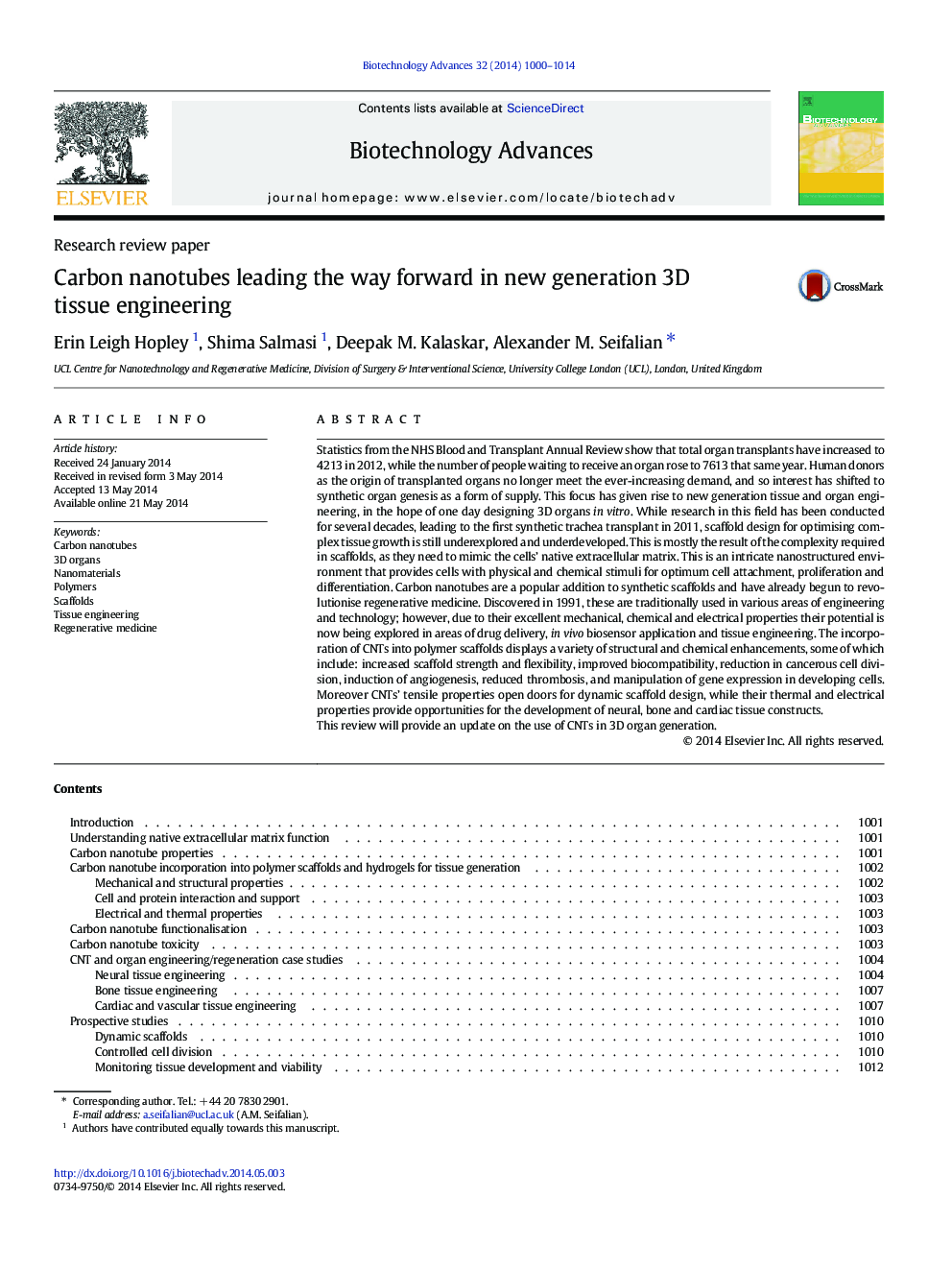| Article ID | Journal | Published Year | Pages | File Type |
|---|---|---|---|---|
| 14301 | Biotechnology Advances | 2014 | 15 Pages |
Statistics from the NHS Blood and Transplant Annual Review show that total organ transplants have increased to 4213 in 2012, while the number of people waiting to receive an organ rose to 7613 that same year. Human donors as the origin of transplanted organs no longer meet the ever-increasing demand, and so interest has shifted to synthetic organ genesis as a form of supply. This focus has given rise to new generation tissue and organ engineering, in the hope of one day designing 3D organs in vitro. While research in this field has been conducted for several decades, leading to the first synthetic trachea transplant in 2011, scaffold design for optimising complex tissue growth is still underexplored and underdeveloped. This is mostly the result of the complexity required in scaffolds, as they need to mimic the cells’ native extracellular matrix. This is an intricate nanostructured environment that provides cells with physical and chemical stimuli for optimum cell attachment, proliferation and differentiation. Carbon nanotubes are a popular addition to synthetic scaffolds and have already begun to revolutionise regenerative medicine. Discovered in 1991, these are traditionally used in various areas of engineering and technology; however, due to their excellent mechanical, chemical and electrical properties their potential is now being explored in areas of drug delivery, in vivo biosensor application and tissue engineering. The incorporation of CNTs into polymer scaffolds displays a variety of structural and chemical enhancements, some of which include: increased scaffold strength and flexibility, improved biocompatibility, reduction in cancerous cell division, induction of angiogenesis, reduced thrombosis, and manipulation of gene expression in developing cells. Moreover CNTs’ tensile properties open doors for dynamic scaffold design, while their thermal and electrical properties provide opportunities for the development of neural, bone and cardiac tissue constructs.This review will provide an update on the use of CNTs in 3D organ generation.
